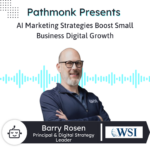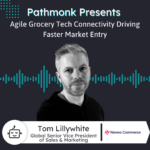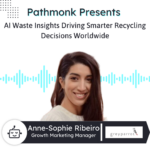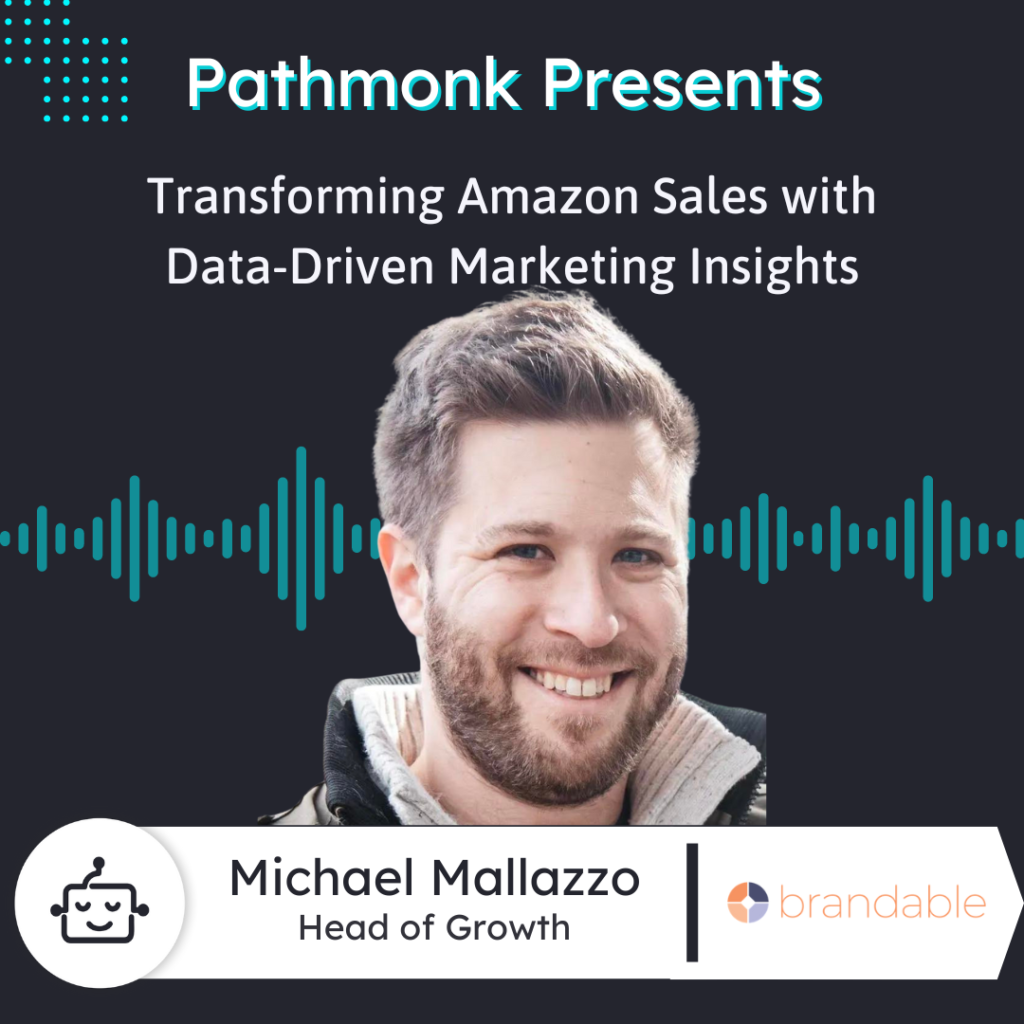
Introduction
In this insightful podcast episode, we welcome Michael Mallazzo, Head of Growth at Brandable, a cutting-edge software platform designed to help Amazon sellers optimize their marketing strategies and master unit economics.
Michael shares valuable insights into the challenges faced by independent sellers on Amazon, and how Brandable’s comprehensive tools streamline operations, provide in-depth profitability analysis, and offer pricing and promotion optimization strategies to drive sustainable growth.
Discover how leveraging data and effective marketing tactics can transform your Amazon business for profitable growth.
More Sales From Your Website With AI
Personalized interactions based on your users' behaviour to get +50% more conversions.
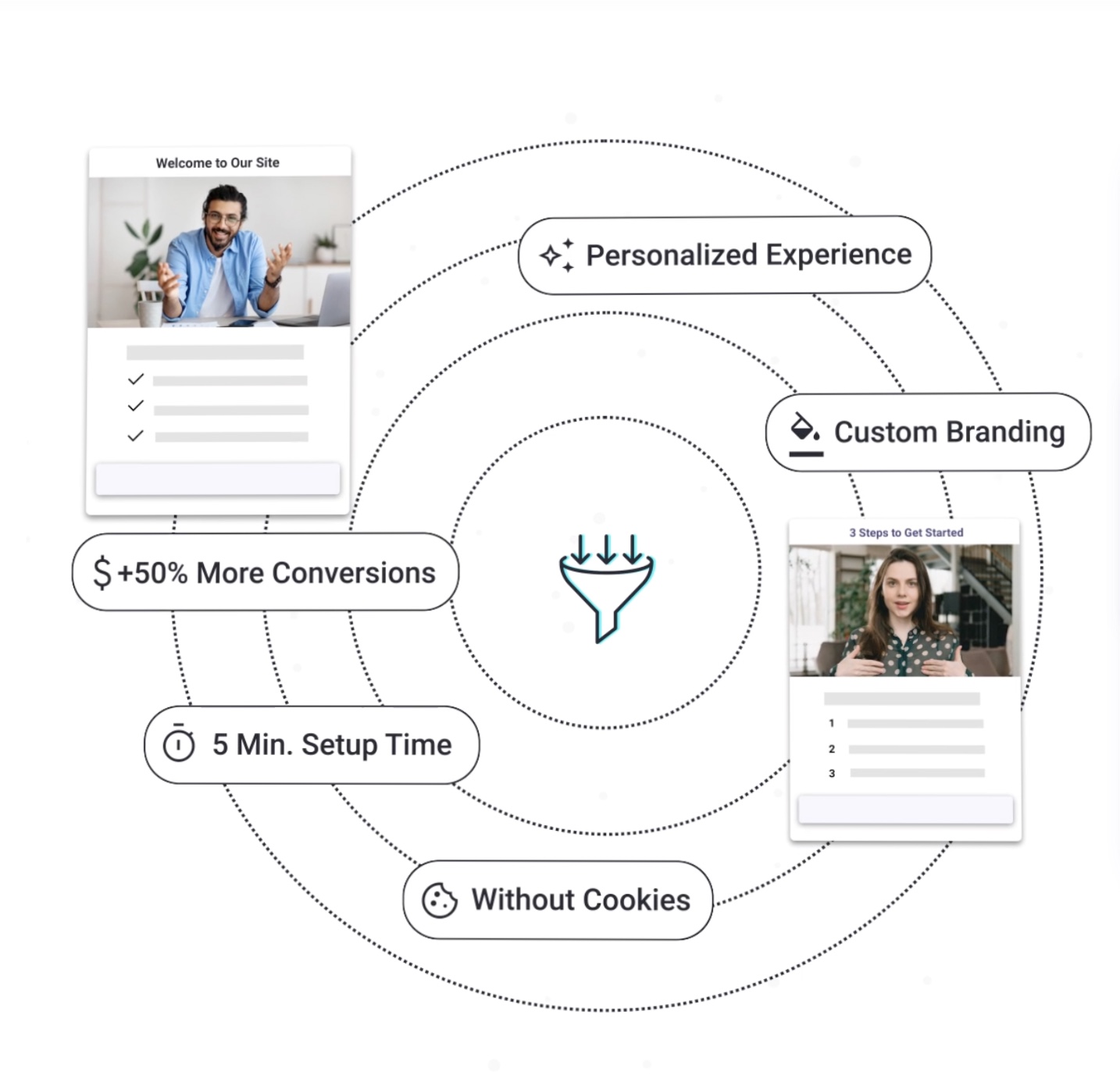
Ernesto Quezada: Pathmonk is the intelligent tool for website lead generation. With increasing online competition, over 98% of website visitors don’t convert. The ability to successfully show your value proposition and support visitors in their buying journey separates you from the competition. Online, Pathmonk qualifies and converts leads on your website by figuring out where they are in the buying journey and influencing them in key decision moments. With relevant micro experiences like case studies, intro videos, and much more, stay relevant to your visitors and increase conversions by 50%. Add Pathmonk to your website in seconds. Let the AI do all the work and get access to 50% more qualified leads while you keep doing marketing and sales as usual. Check us on pathmonk.com. Welcome to today’s episode. Let’s talk about today’s guest. We have Michael from Brandable, Head of Growth with them. How are you doing today, Michael?
Michael Mallazzo: I’m alright, Ernesto. Thanks for having me.
Ernesto: It’s great to have you on. We were discussing a little bit about what Brandable is all about, so I want to give that to our listeners as well. So in your own words, can you tell us a little bit more?
Michael: Yeah. Brandable is a software platform for operators to master unit economics on Amazon. I don’t know how many of your listeners own an Amazon business, but I assume a fair number have shopped on Amazon in the last year. So it’s no surprise that things are getting more expensive both for consumers and brands alike. Profitable growth on Amazon is harder than ever for independent sellers. But Amazon is still fifty cents of every dollar that is spent online in the United States of America and still, quite frankly, the easiest way to reach tens if not hundreds of millions of shoppers. So what our tool does is provide a sort of all-in-one command center for Amazon sellers to streamline their operations, understand profitability, and really dig deep into the profit and loss drivers.
Ernesto: Great, great to share that with us. And so that way our listeners could get a good understanding of Brandable. Then, Michael, what would you say is the key problem that you like to solve for clients?
Michael: Yeah, the key problem that we solve is, you know, Amazon’s back end interface, Seller Central, is a fairly cumbersome interface to use for a lot of Amazon operators and it’s a difficult place to truly extract insights from data, specifically around profitability at the individual product level. So there are several Amazon operators, from small mom-and-pop folks doing a few hundred dollars a month to multi-hundred-million-dollar brands, that have trouble really understanding what drives profitability on a given day. In the Amazon ecosystem, we provide the simplest tool for knowing just that. We provide a lightning-fast P&L entirely for free for operators in the Amazon community to be able to dig deep on profitability at the individual SKU, custom category, and overall brand level. And, for more sophisticated operators, we have a suite of paid features to help them really price their products effectively, run sophisticated coupon and deal strategies, so that they can be more profitable, and ultimately so that end shoppers can get the best possible deal on Amazon from our merchants.
Ernesto: Great, great. And so on that note then, is there a vertical segment? Is there an ideal ICP that Brandable likes to go for?
Michael: Yeah, absolutely. So in the early days, we sort of first found product market situation with largely direct-to-consumer brands that were starting to launch on Amazon. We looked at largely operators that had done $5 million or more a year on Shopify and were just starting to scale their businesses on Amazon. One of the trends you probably noticed as a shopper is, a lot of your favorite brands that didn’t sell on Amazon two, three years ago are now selling on Amazon because you’ve got to fish where the fish are, per se. So early on we looked for those buzzy, direct-to-consumer brands that were coming over to Amazon and a lot of the agency ecosystem that supported them. As we continue to grow and evolve our strategy, that’s still probably our core ICP, but we’ve also started to look down market to try to serve Amazon sellers earlier in the journey. Again, for most entities that do less than $5 million a year on Amazon, our product is entirely free. Most of those folks are simply using our free tools to have an easier way to pivot their data and understand their P&L. But once folks get a little bit more advanced, a little bit more sophisticated, we start to try to upsell some of our paid features.
Ernesto: Definitely, that’s important. All right, great to hear that. And so that way our listeners who are tuned in can go ahead and visit you. You can always check them out at getbrandable.com. What role does the website then play for client acquisition, Michael?
Michael: Yeah, so this is what’s fundamentally changed. When we first launched, we were running what I would basically call an old school 2015 outbound enterprise sales playbook. So the goal of our website in those days was largely to just sort of be a storefront and tell our brand story. But everything was optimized around trying to schedule a demo, right. We were trying to get folks to book a link with me or one of the co-founders. Our CTA buttons in the earliest days actually went straight to a Calendly. It was sort of a very outbound sales function, and it was really branding as well. We were a new software platform, so we were trying to tell people what we did in market. That was largely paired with, again, what I would call a very old-school by modern standards sales approach. We were doing large volumes of outbound email. We were doing Dripify campaigns on LinkedIn. We were going to market as any enterprise software platform. And that made sense for our original ICP and for us to find original product market fit. What has changed in the last month is we’ve opened up this free tier of our software and rather than trying to convert a small handful of paying customers, we now want to reach hundreds and thousands of operators and give away the free tier of our tool. What that means is we have to take a product-led growth function and everything about the website is meant to be optimized around getting folks to just start a free trial. No need to talk to us. Start your free trial in two minutes or less. In 2 hours or less, you can connect your Seller Central account and data will flow through the system. You can enjoy everything that we provide for free. And then if you’re interested in looking at some of our sophisticated pricing and promotion optimization tools, you can talk to us. So that’s been the major change, right? Going from kind of enterprise sales to product-led growth. The only other thing that I would say is that as we’ve started to become more of a PLG freemium platform, we’ve had to actually get truly good at content marketing. So in the early days, we had a couple of basic blog posts and case studies. Now, we’ve invested in actually writing best-in-class content that is valuable, can rank in search, and we’re also playing around with some optimization at the margin using AI. I am pretty adamant that anyone that is doing pure AI-generated content, most of that is reductionist, mediocre stuff. But one smart use of AI, I think, is for keyword optimization on the long tail. So if you take a blog post that is human-written and really eloquently well-written, but then use AI to spin up ten or fifteen different variations that try to rank for different keywords. I think that’s a useful way to augment valuable content that a human has written and have AI do the tedious stuff of trying to win Google’s long tail game. That’s something we’ve put into place over the last couple of months, which has upped our organic traffic significantly and allowed us to try to scale this freemium strategy without being too reliant on paid advertising.
Ernesto: All right, great. Awesome. Great. Thank you so much for sharing that. Well, let’s switch gears a little bit, Michael, and let’s talk about you as a leader, you being the Head of Growth there. For Brandable. What are some key tasks that you like to focus on in your day-to-day work?
Michael: Yeah, I mean, so it’s important now to have the growth, but we’re a lean team, right? We’re a three-person team and kind of building this. And I think that’s one of the interesting things in software, is you can build pretty large, significant companies now with way fewer people than you could forget about even five years ago. But even two years ago, between advancements in AI and advancements in what offshore teams can do, there are two or three-person software teams like ours that are able to build some pretty powerful products, which I think is a really interesting trend in the market. Yeah. So, for me, the day-to-day, in the early days, when we were doing more of an enterprise outbound motion, it was mostly sales. I was doing five, six demo calls a day, and all the things that come with that, as we transition and we still do some outbound calls for larger customers and agencies that want to use the platform. But as we’ve transitioned to a little bit more of a freemium strategy, it’s things like copywriting, making sure our CTA is really interesting. I have personally written three or four of the blog posts on our website. I have a writing background, so it makes sense. But that is the kind of stuff that I am largely focused on. I’m not a product guy. I’m not an engineer. I’m mostly helping our enterprise customers think about smart ways to use our paid platform. And as I think about trying to drive free signups, it’s largely coming up with the right copywriting and tests around offers and things to encourage folks to give the software a whirl. The other thing, a little bit, maybe tangential in this conversation is we do a little bit of marketing, but we look to sponsor very targeted industry newsletters and things like that. So kind of negotiating the best possible deals there. And then again, writing good copy to go into industry newsletters to actually drive conversion is something that I’m spending my time on. So it’s really been a story of moving from a sales-led kind of approach to a sort of inbound content-led approach.
Ernesto: All right, awesome. Thank you so much for sharing that with us. Well, let’s jump into our next section here, Michael, which is a rapid-fire question round. Are you ready for them?
Michael: Yeah, of course.
Ernesto: Awesome. All right, first off then, Michael, is what is the last book that you read?
Michael: Good question. Manhunt: The Search for Abraham Lincoln’s Killer. It’s a show on Apple TV as well.
Ernesto: Okay, interesting. All right, great read there. Next, up. That is, if there would be no boundaries in technology, what would be that one thing that you want to have fixed for your role as a marketer today?
Michael: That’s a good one. I think if there were absolutely no boundaries for technology, I would like to know at an absolute certain level what is AI-generated or what is not. I think I can get it right 95% of the time. But I would be really, really curious as I think one of the really challenging things in marketing is AI makes too many things easy for too many people. And there are smart uses of the tool and I think there are highly deceptive uses of the tool. I would love to know anytime that I am being targeted, was a sort of ad or an offer created by a person or by a bot. I think it’s something that I would be really keen on.
Ernesto: I think everybody, I think that would be super interesting. Right? Awesome. Awesome. Then next is if there’s one repetitive task that you could automate, what would that be?
Michael: Yeah, so I think this gets back to what I was thinking about talking about sort of AI optimization of our blog post. To me, it’s long-tail SEO. Long-tail SEO is make or break, both for our consumer goods business that we manage on the Brandable side, and for B2B businesses like Brandable. But it’s a stupid game. It’s a really dumb use of smart people’s time is trying to think about how to get a piece of content or a web page to satisfy whatever whims Google is feeling in a given week. Specifically, when it comes down to really esoteric queries, we’re a small software company. We’re never going to win best e-commerce SaaS, but we may win best profit analytics tool for Amazon searches. But being able to actually write smart content about our platform and then have machines optimized for the long-tail SEO versus having to make a real writer have to think about how to jam as many keywords in as possible is one place that I’ve been really excited about technological development. I think there are some really, really smart uses of tech coming out to help play this long-tail SEO game. So that’s one spot that I think we’re super keen on automating. The other one is, it doesn’t really, and again, this is less our business, but a lot of what outbound SDRs do for a living, unfortunately, I think just doesn’t make a lot of sense anymore with where the industry is headed. Salespeople should be, in my opinion, sending way, way less, but way higher quality cold outreach messages. And machines should be doing the vast majority of SDR work based on buying triggers that people show on websites and things like that. So I think that’s an exciting development. Right. I think three, four years ago, there were so many junior salespeople doing so much monotonous, repetitive work, and I think that job is going away. There may be a little bit of job loss and swirl in the process, but ultimately it’s better for both salespeople and prospects for the easy, automated things to be done by machines and people to actually focus on adding value when they try to cold call or email you.
Ernesto: Definitely. Okay, great, great, awesome. And then, well, lastly, Michael, you have a lot of experience already in the marketing world, but what is that one piece of advice that you would give yourself if you were to restart your journey as a marketer today?
Michael: Yeah, I think it’s a good question. Get really good at copywriting. I think is, I mean, I was a writer by trade, copywriter. Right? These are two different things. Like get really, really good at business writing, because that will help you. Whether you do product marketing or content marketing or outbound sales, it doesn’t really matter. Being someone who can write really pithy smart copy is one thing, and I think the other thing is know when to be scrappy and know when to automate. I think a lot of people from big companies struggle in startups because they don’t know how to be scrappy. But I think the sort of converse of that is true for a lot of marketers that came up in startups like I did. There’s a temptation to want to do everything yourself because that’s what early-stage marketers have to do. But, when you reach a certain scale, you find yourself as a Head of Growth or a VP of Marketing, doing things that you can outsource on Upwork, not the best use of your time. And being able to understand, you know, when you almost have to stop being scrappy. As a startup person, I think is something I struggled with for a long time in my career and even still struggle with, because I like to kind of be hands on keys and hacking away and you know, again, sometimes it’s not the best use of your time to be maybe testing some tiny piece of copy as a leader.
Ernesto: All right, great, great. Thanks. Great advice there for our listeners. Well, we are coming to the end of the show here, Michael. But before we do end, I do want to give you the last word. If someone forgets everything about the interview today, what is that one thing they should remember about your company?
Michael: About the company. Profitable growth on Amazon is harder than ever, and it requires an absolutely astute understanding of your P&L. We’re the fastest and best tool for that.
Ernesto: Well, you guys heard it. You could check them out at getbrandable.com. Enabling profitable growth on Amazon. Michael, thank you so much for being on with us today. To our listeners, thank you so much for tuning in, and I’m looking forward to our next episode at Pathmonk Presents. Thanks a lot, Michael.
Michael: Take care, man.




